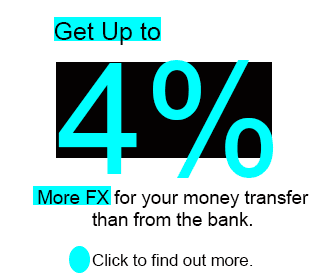RBA Rate Hike Could Get Australian Dollar "Juices Flowing"
- Written by: Gary Howes

Image © Adobe Images
The Australian Dollar could power to June 2023 highs if the Reserve Bank of Australia (RBA) raises interest rates again due to disappointing inflation data, but a deterioration in global investor sentiment could yet spoil the bulls' party.
Does Australia have an inflation problem? Some commentators fear this might be the case after this week's inflation print landed on the wrong end of expectations at 3.6% year-on-year; yet for AUD bulls, the developments are supportive.
"To hike or not to hike interest rates? That is the question for the Reserve Bank of Australia following hotter-than-expected Australian inflation data on Wednesday, with the AUD all ears for an answer," says Robert Howard, a Reuters market analyst.
Howard says another rate hike from the RBA could get the "juices flowing" for the Aussie Dollar.
Compare GBP to AUD Exchange Rates
Find out how much you could save on your pound to Australian dollar transfer
Potential saving vs high street banks:
A$48.75
Free • No obligation • Takes 2 minutes
It was reported midweek that Australian CPI unexpectedly rose to 3.6% year-on-year in April, its highest level for five months when a decline to 3.4% was forecast.
David Forrester, Senior FX Strategist at Crédit Agricole, says the report's details show core inflation is proving problematic. Inflation that excludes volatile items was stable at 3.50% y/y, and another measure that excludes holiday travel was also stable at 4.1% y/y.
"This shows that the retreat in inflation is stalling due to sticky inflation for housing, especially rent, and health insurance," says Forrester.
He expects upward pressure on the monthly inflation data in the coming months and until the end of Q2 as service prices gain in weight.
Minutes from the latest RBA meeting, published last week, showed that the RBA judged a rate rise might be needed if inflation forecasts proved too optimistic.
"Should the RBA deliver a hike shock at its next meeting on June 18, or drop a strong hint that it could raise rates during the third quarter, it might propel AUD/USD towards 0.69 (June 2023 high)," says Howard.
The Australian Dollar has been one of the better-performing major currencies in the past two months, spurred on by confident global investor sentiment and expectations that the RBA would potentially be the last central bank to cut interest rates.
For AUD to keep going higher, we suspect it would require both drivers to remain in place.

The inflation data keeps the RBA pillar in place, but over the past two days, global investor sentiment has started to wobble, which explains why AUD did not benefit significantly from this week's inflation data and RBA speculation.
The cause of the deteriorating sentiment is rising bond yields in the U.S. as investors 1) realise there remains limited chances of a near-term rate cut from the Federal Reserve due to robust domestic data and 2) a strong supply of U.S. bonds to an already saturated market.
The U.S. budget deficit continues to swell to meet the generous fiscal policies of the current government. This is fine as long as demand is there, but when demand starts to falter, the cost of the debt (yields) starts to rise.
Rising bond yields push up the cost of finance, and markets start to falter.
"The decline in U.S. stocks reflects a series of concerns among investors, including rising Treasury bond yields, uncertainty about interest rate cuts, and an uncertain economic outlook. These factors have created a risk-averse environment in the market, leading to a massive sell-off of stocks. The evolution of these elements will be crucial in determining the future direction of the market and investor confidence," says
The duration of the current pullback in global markets will be instrumental in deciding how far the AUD will retreat.
If it proves short-lived, investors can once again turn to the 'hawkish' RBA story, which is a source of support for the Aussie.




